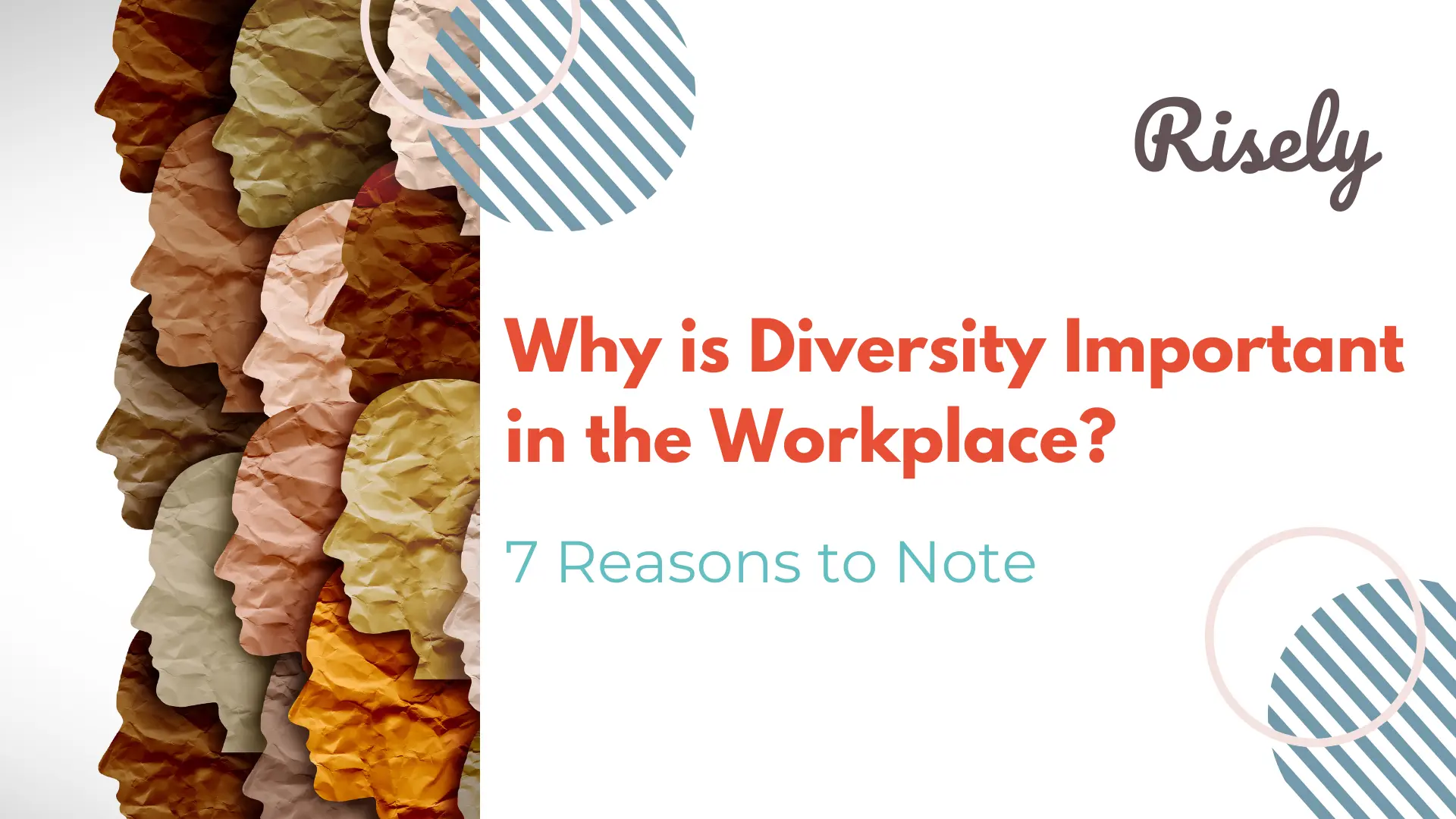How a Multicultural Workplace Boosts Your Bottom Line and Work Culture
Have you ever felt challenged and isolated due to your ethnicity in the office? But what if we could turn that experience into a positive one? What if we could embrace our differences and use them to our advantage? The world is becoming increasingly diverse, and workplaces are no exception. A multicultural workplace is very common these days, as this doesn’t only promotes core values but also encourages creativity and growth with different perspectives of diverse mindsets. However, it can also bring various challenges, such as communication gaps due to language barriers and cultural differences. The purpose of this blog is to understand the importance diverse workplace and how it benefits and challenges the company. Also, we added tips to promote diversity at the workplace and how established companies practice diversity at their workplace. Let’s get started!What is a multicultural workplace?
You walk into your office and see diverse individuals working together towards a common goal. You hear different languages spoken, taste various cuisines during lunch, and learn about new cultural traditions during team-building activities. This is what a multicultural workforce looks like. A multicultural workforce is one where employees come from different backgrounds, cultures, ethnicities, and languages. In other words, a group of people with varying beliefs, values, and experiences working together towards a common goal. This diversity brings many benefits to the workplace, such as increased creativity, improved problem-solving abilities, and enhanced communication skills. However, a multicultural workforce also comes with its own set of challenges. For example, cultural differences and misunderstandings can arise, leading to communication breakdowns or conflict. b Language barriers can make it difficult for team members to understand each other, and stereotypes or biases can create tensions among employees. But by embracing diversity and inclusivity, companies can tap into the full potential of their employees and create a dynamic and innovative workplace that thrives in today’s global marketplace.Other Interesting Reads
Why is it important to have a diverse workforce?
Diversity is more than just a buzzword – it’s essential to a successful and thriving workforce. When a company embraces diversity, they open the door to a range of benefits that can positively impact its bottom line, employee satisfaction, and overall success. So let’s take a closer look at why having a diverse workforce is important. Diversity fosters innovation; when you have a group of people with different backgrounds, experiences, and perspectives, you open up a world of new ideas and approaches. This leads to a better creative problem-solving approach, fresh perspectives on products and services, and the ability to tap into new markets and demographics. Diversity also promotes better decision-making, as the team comprises individuals from different cultures, promoting different perspectives and approaches to solving problems, leading to a well-rounded approach to decision-making. Additionally, a diverse workforce is more reflective of the world we live in. As our communities become more diverse, companies must reflect this diversity in their employees. This builds customer trust, fosters deeper connections with diverse communities, and creates a more welcoming and inclusive workplace. Also, having diverse individuals onboard is important as it helps attract and retain top talent. Talented individuals are often drawn to companies that prioritize diversity and inclusivity and are likelier to stay with a company that values their unique contributions and experiences.Benefits Workplace cultural diversity
- Increased creativity and innovation from diverse perspectives and approaches.
- Enhanced problem-solving abilities due to a wider range of ideas and viewpoints.
- Improved communication and collaboration skills through exposure to different communication styles.
- Increased cultural awareness and sensitivity among employees.
- Expanded global reach and marketability by better understanding and connecting with diverse communities.
Ways to promote diversity in Workplace
Promoting diversity in the workplace requires deliberate effort and commitment from all levels of an organization. Here are some ways to encourage diversity in the workplace:- Develop a recruitment strategy that ensures diverse candidates are sourced and considered for open positions. Consider collaborating with organizations that encourage diversity and inclusion to increase the diversity of the candidate pool.
- Provide diversity and inclusion training to all employees, including managers and executives, on diversity, inclusion, and unconscious bias. This training can help employees understand the importance of diversity and provide tools for creating an inclusive workplace.
- Encourage open communication, respect for different perspectives, and appreciation of cultural differences, and make employees feel welcomed and valued.
- Celebrate the diversity of your workforce through events and activities that promote cultural awareness by hosting cultural food days, diversity celebrations, and employee resource groups.
- Provide support and resources for diverse employees: Ensure that diverse employees have access to the resources and support, such as; mentoring programs, language classes, and other development opportunities they need to succeed in the workplace.
- Regularly evaluate and measure their success to ensure they achieve their goals. Analyze by collecting data on diversity within the organization, conducting employee surveys, and monitoring the success of diversity initiatives over time.

Challenges Due to Multicultural Workplace
- Language barriers can make communication difficult.
- Cultural differences and misunderstandings can lead to conflict or tension.
- Stereotypes and biases can create a hostile work environment.
- Different work ethics and values can lead to different approaches to problem-solving or decision-making.
- Adapting to different communication styles and cultural norms can require additional effort and flexibility.
- Legal and regulatory compliance can vary widely across cultures and countries.
- Different attitudes towards hierarchy and authority can affect the dynamics of the workplace and decision-making processes.
Tips to manager multicultural workplace
- Foster open communication and collaboration to help break down barriers and build trust among team members.
- Provide cultural awareness and sensitivity training to help employees understand and appreciate different perspectives and cultural norms.
- Encourage diversity and inclusivity to create a welcoming and inclusive work environment.
- Develop a strong company culture that values and embraces diversity as a core principle.
- Implement policies and procedures that promote equity and fairness to help ensure that all employees feel valued and respected, regardless of their cultural background.
Real-life examples of a multicultural workplace
- Google is a global company with offices in over 50 countries; it strongly emphasizes diversity and inclusion. They have numerous diversity initiatives, including employee resource groups, diversity training programs, and unconscious bias workshops.
- Airbnb recognizes the importance of a diverse workforce and has implemented numerous policies to promote inclusion and cultural awareness. They offer language classes and cross-cultural workshops and have a team dedicated to ensuring diversity and inclusion in their recruitment process.
- IKEA has a highly diverse workforce with over 400 stores in 52 countries. They embrace cultural differences by celebrating diverse holidays and cultural events, offering language classes, and providing cultural sensitivity training.
Conclusion
A multicultural workplace offers many benefits, such as increased creativity and improved problem-solving skills. However, it also comes with its own set of challenges, including communication barriers and cultural differences. As leaders, creating an inclusive environment where everyone feels valued and respected is essential. This can be achieved through training, open communication, and celebrating diversity. In addition, by embracing different perspectives and experiences, we can create a stronger, more cohesive team. So, let’s continue building a workplace culture that embraces and celebrates our differences. Together, we can create a truly inclusive environment where everyone can thrive. To learn more about managing teams and leadership skills, sign up for Risely-manager’s buddy!Ace performance reviews with strong feedback skills.
Master the art of constructive feedback by reviewing your skills with a free assessment now.
FAQs
Why is multiculturalism important in the workplace?
Multiculturalism is important in the workplace as it fosters diversity, inclusivity, and innovation. It allows for a broader range of perspectives, experiences, and ideas, leading to better decision-making and improved business outcomes.
How do you manage a multicultural workplace?
To manage a multicultural workplace, promote diversity and inclusivity, establish clear communication channels, provide cultural training and support, recognize and celebrate differences, and respect diverse perspectives and customs.
What are the advantages and disadvantages of having a multicultural workplace?
The advantages of a multicultural workplace are increased creativity, innovation, and diverse perspectives. Disadvantages include communication barriers, cultural misunderstandings, and potential conflict.
Other Related Blogs
Why is Diversity Important in the Workplace? 7 Reasons to Note
Why is Diversity Important in the Workplace? 7 Reasons to Note Conventionally, teams at work are made up of similar people. They are usually from the same place and reached…
8 Succession Planning Challenges: With Real-life Examples and Failures
Are you ready to pass the baton? Succession planning is a critical process that ensures a smooth transition of leadership within organizations. But have you ever wondered about the challenges…
Understanding Negative Bias And Its Cause, With 7 Strategies To Overcome It
Understanding Negative Bias And Its Cause, With 7 Strategies To Overcome It Have you ever formed snap judgments about someone based on their appearance, personality, or background? Of course, we…
Top 8 Challenges of Diversity in the Workplace in 2025
Company culture is the cornerstone of success. It’s the foundation on which businesses are built and can be the key to attracting and retaining top talent. Unfortunately, not all company…


